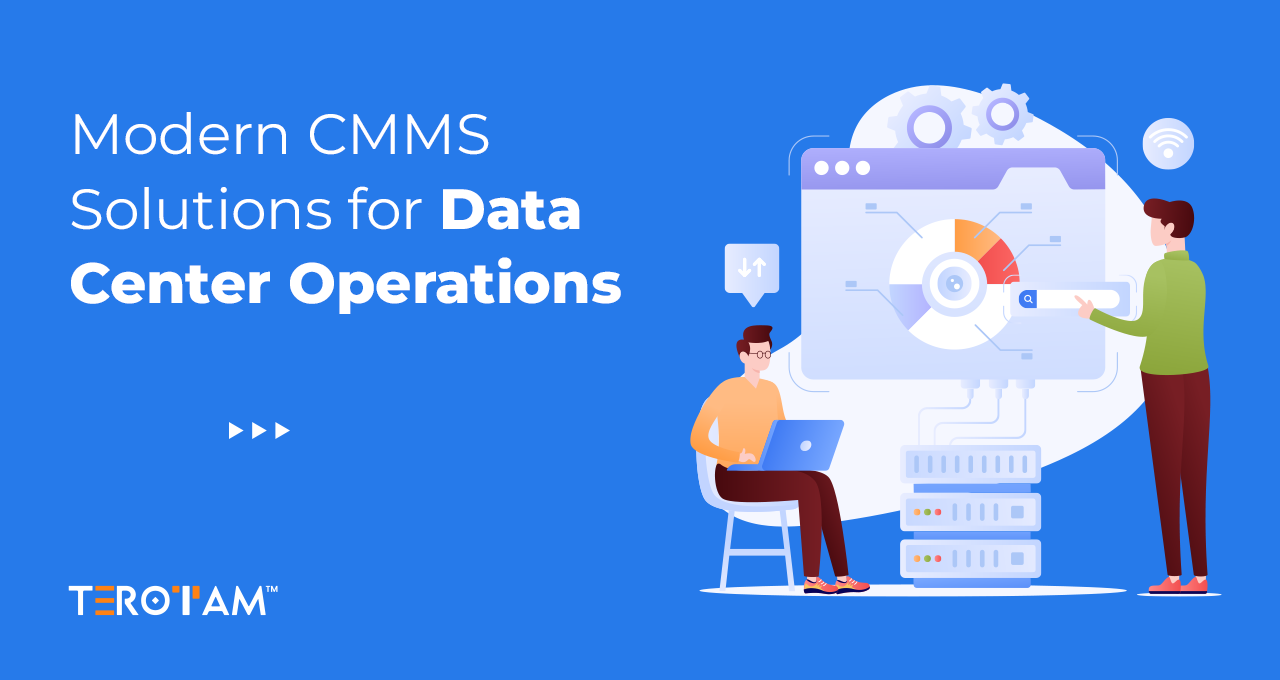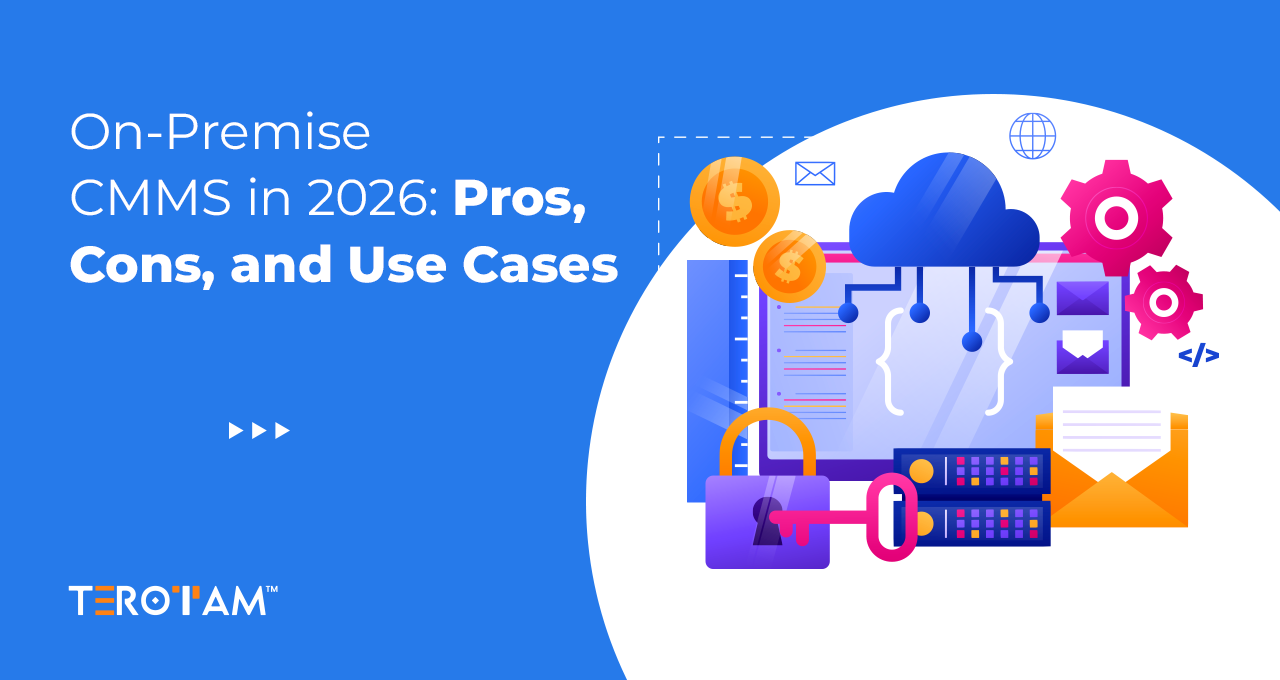Downtime has been discussed for a long time, and thereafter, the way to manage it. Now, when it comes to managing equipment downtime, the first thing that comes under discussion is equipment downtime tracking. It is very important to understand the role of equipment downtime tracking when we are planning equipment reliability.
Equipment downtime tracking is something that helps the organization focus more on cause & effect relationship-driven solutions rather than being generalized on the approach towards maintenance. It helps you plan and prepare the preventive maintenance plan with accurate data insights for better equipment reliability.
This article will discuss the importance of tracking equipment downtime and how you can perform it. Let’s start by understanding the subject itself.
What is Equipment Downtime Tracking?
Equipment downtime tracking a process of recording and analyzing time frames where machines are not in running condition due to any specific reasons like, breakdown, under maintenance, or any other operational inefficiency of the machine. This tracking activity involves starting from minor breaks to longer breakdowns, producing insightful data that helps recognize equipment reliability score and its potential issues, and also finding possible ways to enhance the equipment reliability.
How Equipment Downtime is Different from Production Downtime?
Before discussing the equipment downtime, let’s understand how it differs from the total production downtime. A single equipment or equipment line downtime doesn’t mean that the whole production facility is on hold. Still, when it’s production downtime, it may belong to the break on the whole production facility and its breakdown or non-working condition for a specified time.
Let’s understand the different terms, criteria and effects of both these concepts where they intercept or diversify from each other.
| Aspect | Equipment Downtime | Production Downtime |
| Definition | Deals with the time when an equipment is not in a working condition because of breakdown or maintenance activity or other issues. | Not dealing with any specific equipment, rather focuses on the production process as whole on a pause with any reason. |
| Causes | Any kind of Mechanical failuresPre-scheduled maintenanceReactive maintenance or repairs Any issues in Software for any automated equipment | Any malfunctions in equipment (including issues covered under equipment downtime)Interruptions in Supply chainShortage or Unavailability of raw materialsLabor issues (e.g., strikes, shortages)Power outages |
| Measurement Focus | It focuses mostly on a single or any specific equipment or equipment lines. | It focuses on the overall production line or the complete output capabilities of the production facility. |
| Impact | It impacts the equipment’s efficiency and life cycle of that equipment. | It impacts the whole production productivity, delivery schedules and relevant customer satisfaction. |
| Management Strategies | Planned Preventive maintenanceQuick Action force for reactive repairs.Replace or Upgrade of problematic spare parts of equipment. | Systematic approach to supply chainProper Labor & Resource managementPower back-up availabilityVivid supplier networks to kill dependency |
| Data Collection | It includes automatic monitoring, IoT sensors and varied machine logs and data insights. | It entails some important data sources as in ERP platforms, workforce data and Inventory management solutions. |
Methods of Tracking Equipment Downtime
Efficient equipment downtime tracking is vital for any manufacturing or production facility targeting to optimize operations and minimize unplanned outages. The following are different methods that range from simple manual tracking to complex automated systems:
1. Manual Logging
Operators or maintenance personnel record when the machines stop running using log books or spreadsheets. Each entry usually includes when the downtime started and ended, what equipment was affected, a brief note on the issue at hand, and sometimes actions taken towards resolving it.
Implementation:
- Standardize a form or template for recording downtime.
- Educate employees about the importance of accurate and timely data entry.
- Regularly inspect logs to ensure compliance and accuracy.
Pros:
- No capital cost; implementation is very easy.
- No need for specialized technology.
Cons:
- This method is time-consuming and prone to errors by humans.
- Sometimes data could be incomplete or inaccurate.
- Incapable of effectively analyzing huge volume of data well
2. Automated Monitoring Systems
These use sensors as well as machine-connected devices, which can automatically detect stoppage in the operation of machinery. In most cases, they can even identify the cause behind such an occurrence with real-time recording acting accordingly.
Implementation:
- Install sensors and IoT devices on critical machinery.
- Connect these devices into a central monitoring system that picks up downtimes’ information from them.
- Integrate this system with existing IT infrastructure to allow for centralized data access plus analysis later during the decision-making process.
Pros:
- Real-time data collection which is accurate in nature
- Minimizes manpower needed for manual tracking purposes
- Facilitates quick response in case equipment fails
Cons:
- Initial set-up expenses are higher whereas maintenance costs are also high generally speaking,
- Requires expertise (technical) to install/maintain
3. SCADA Systems (Supervisory Control and Data Acquisition)
SCADA systems are used to control industrial processes locally or at remote locations. They are also used to monitor, gather and process real-time data pertaining to equipment operational status.
Implementation:
- Implement SCADA software that interfaces with your equipment.
- Use SCADA for real-time data collection, visualization, and control over equipment operations.
- Set alarms for immediate notification of equipment failures.
Pros:
- Has monitoring and control capabilities that are comprehensive in nature
- More operational visibility together with instant access to data
- They can be scaled up while also being integrated into other enterprise applications
Cons:
- Very complex and costly to install
- Requires specialized training to configure or maintain it
4. CMMS (Computerized Maintenance Management Systems)
CMMS is computer software designed to keep a database of information about an organization’s maintenance operations. This system assists managers in making well-informed decisions regarding downtime as well as scheduling preventive maintenance activities.
Implementation:
- Choose a suitable CMMS solution such as TeroTAM that suits the organization’s needs and budget.
- Put all machine details into the TeroTAM CMMS including maintenance schedules, manuals, historical downtimes.
- Train the maintainers on how they can use the system both to log their activities during maintenance time as well as retrieving any relevant information needed concerning repairs made on each part.
- Integrate CMMS Software with existing SCADA systems so that there will be a continuous flow of real-time data between equipment monitoring and management of maintenance. This integration allows for the automatic update of the CMMS with the latest operational data from the SCADA system, such as real-time alerts, performance metrics, and detailed reports on equipment usage and failures.
Pros:
- Maintenance information is centralized
- Scheduling/planning/tracking of maintenance work is facilitated
- Improved decision-making through reports/analytical tools
- Real time integrated predictive analysis/condition based monitoring preventing unseen failure incidents caused by insufficient attention given towards machine operating rate changes among others Thus reducing costs in terms of reactionary maintenance plans which could have been otherwise avoided
Cons:
- Investment in software and maybe hardware is a must
- Requires continuous management, data processing, maintenance
- Can be complex when linked to SCADA systems and need for IT specialists.
How Equipment Downtime Tracking Helps in Designing Preventive Maintenance Plans?
Combining equipment downtime tracking with preventive maintenance planning can change reactive maintenance into a proactive strategic process. This is how this partnership adds value to the practice of maintenance planning:
1. Identifying Common Failure Points
- Pattern Recognition: Gather data to understand failure trends and patterns among similar equipment families.
- Targeted Maintenance: Guides the most susceptible components towards improved reliability.
- Failure Analysis: Aids in preventing further recurrence by identifying what precipitates failures within equipment.
- Component Monitoring: Shows when it is time to take preventive measures through degradation of certain parts.
2. Optimization of Maintenance Schedules
- Data-Driven Scheduling: Uses real operational data for determining best intervals for maintenance works.
- Enhanced Efficiency: Avoids unnecessary downtimes by ensuring that there is no extra work done during maintenance.
- Life Cycle Extension: Prevents premature wearing out through timely servicing thus extending equipment lifetime.
- Adaptive Planning: Revise times for the changing needs based on actual machine performance and condition monitoring information.
3. Equipment Lifecycle Management
- End-of-Life Forecasting: Predicts probable period when an equipment or its component will likely fail or need replacement.
- Cost Management: Prepares budgets for major repairs/renewal by indicating when they are necessary.
- Upgrade Planning: When should investment be made on new technology as against maintaining existing assets?
- Sustainability Practices: Refurbishing or replacing decision-making concerning environmental impact and operation efficiency concerns about refurbishing or replacing machinery
4. Resource Allocation
- Priority Setting: Prioritizes maintenance tasks based on the criticality of equipment and its impact on the production process.
- Skill Allocation: Ensures skilled personnel are available for undertaking complex corrective jobs on crucial machines.
- Inventory Management: Forecast future requirements of spare parts in order to ensure their availability by using historical data records as well as predicted models.
- Financial Optimization: Utilizes cost-effective expenditure methods that reduce wastage because unnecessary maintenance is no longer undertaken.
5. Predictive Maintenance Integration
- Real-Time Monitoring: Uses sensors and IoT technologies for continuous monitoring and immediate action.
- Analytics Utilization: Applies advanced analytics on historical downtime data to predict future failures.
- Automated Alerts: Sets up systems to trigger alarms when predictive models detect potential equipment failures.
- Maintenance Accuracy: Customly design precise corrective actions based on specific forecasts of anticipated breakdowns heightening efficiency.
Implementing CMMS for Handling Equipment Downtime
For organizations that want to improve their approach to managing equipment downtime, implementing a Computerized Maintenance Management System (CMMS) is a strategic decision. Centralizing all the information related to maintenance through the CMMS makes it accessible and actionable, thereby transforming it from a reactive process into a proactive one. It allows maintenance teams to schedule, monitor, and analyze their activities efficiently; thus directly affecting the reliability and availability of their machines.
The implementation process often starts with selecting an appropriate CMMS that matches the company’s needs, size as well as budgets. Essential features such as equipment tracking, work order management, preventive maintenance scheduling, inventory control plus comprehensive reporting are some of them which should be targeted while choosing such a system. After identifying the most suitable system, migrating existing maintenance data onto CMMS becomes a crucial stage that may require data cleansing plus formatting so as to achieve compatibility between both systems involved.
Still something we missed? If there is anything pops-up in your mind relevant to this, feel free to connect with our experts or leave us a message on contact@terotam.com







